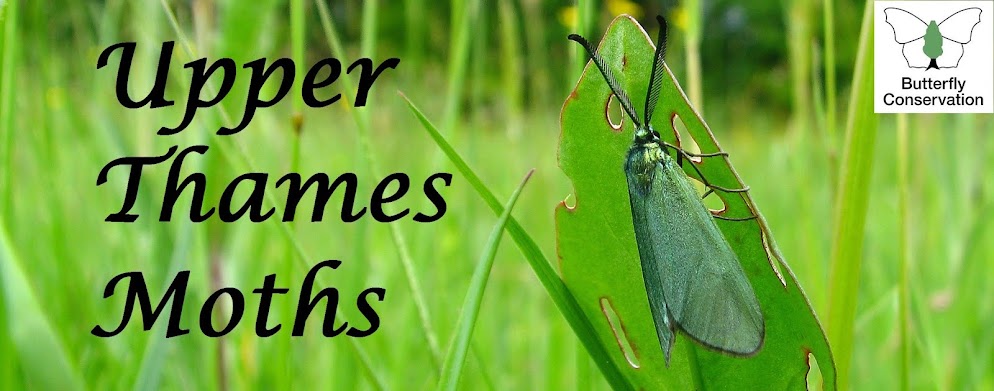In view of the warm weather, I was hoping that Monday night would be good for moths, and I wasn't disappointed. My two lights brought a total of 368 moths of 41 species. For once, Square-spot Rustic was not the most numerous: its count of merely 77 individuals was beaten by Lunar Underwing with 138.
I was excited to find that I had three Autumnal Rustics: a first for the garden.
 |
| Autumnal Rustics Newton Longville 14th September 2020 |
According to the Atlas of Britain & Ireland's Larger Moths, this is a species in significant decline: a fall of 89% since 1970. It has a rather odd-looking distribution - present throughout most of Britain apart from a blank stripe running northeast from Somerset to Lincolnshire, across much of the upper Thames area. When I bought the atlas, I made an overlay on tracing paper that I can place over the distribution maps to see how the dots relate to VC24 and to the 10k grid square where I live. It appears that in Bucks, Autumnal Rustic is confined to the eastern edge of the county, including "my" 10k square.
A quick search on this blog (using the box in the top left corner of the home page) found a couple of posts by Dave Wilton in previous years mentioning its presence on the Ashridge Estate, on Rammamere Heath (on the Bucks/Beds border about 7 km from my garden) and in the soon-to-be formerly disused railway cutting at Salden Wood, less than 3 km away. The latter is now a construction zone as East West Rail work to reconstruct this section of the old Oxford-Cambridge railway. Let's hope that the Autumnal Rustics cling on: they're certainly a very smart moth.
 |
| Autumnal Rustic Newton Longville 14th September 2020 |

Very nice. There are one or two other older records from the MK area (Stony Stratford springs to mind) and Richard Ellis has had it at Chorleywood in the far south-east of Bucks, but otherwise the records come almost exclusively from the sites you've mentioned. I wish it was more widespread as it is a very smart moth! Some of the recorders around Oxford get it too so there's potential for it to become more widespread again, but Mursley is as close as I've found it to my garden.
ReplyDeleteHere in Somerset it is not as rare as the Atlas text suggests, but is strongly associated with large areas of low-fertility soils (especially acidic ones) and is absent from intensively-farmed landscapes. Lovely moths, it is a shame I have to travel to see them!
ReplyDelete